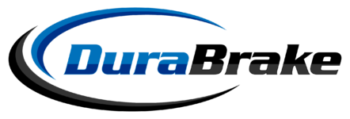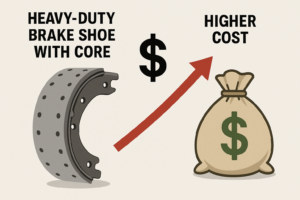In the heavy-duty aftermarket, the use of core-based brake shoes has long been a standard practice. Remanufacturers rely on old brake shoes—cores—to replenish inventory, and fleets and distributors are expected to return these cores in usable condition to avoid extra charges. While the concept may seem simple on paper, in practice it introduces a wide range of operational and environmental challenges.
Here’s why the brake shoe core system is increasingly viewed as a liability by both fleets and distributors:
Inventory Management Headaches
Core tracking is a huge logistical burden. Distributors and dealers must track which shoes were sold with core deposits, whether they’ve been returned, and if they meet the return criteria. Fleets, in turn, must keep cores separated and stored properly until they can be returned. This means:
- Costs and time-consuming manual labor to sort, store, and ship cores by part number and manufacturer, whether it’s done by the fleet or the distributor/dealer.
- Extra warehouse space, which could be producing income, is required to hold used shoes.
- Administrative overhead to process core credits and disputes.
Hidden Financial Costs
Cores carry financial baggage in multiple forms:
- Core deposits tie up cash.
- Rejected cores mean lost money.
- Higher transportation costs.
- Costs and time-consuming manual labor to sort, store, and ship cores
- Administrative overhead to process core credits and disputes
While a relined shoe on its own will likely be less than a new lined shoe, when adding in the core charge, it will likely be more if you don’t get the core credit. So with adding in all of the extra costs and possibly not receiving core credits, your total cost of ownership may be higher. For example, if you purchase a relined shoe kit for $50 and there is a $25 core charge on there, but you can get a new, no-core shoe kit for $60, you will likely save money on the no-core shoe kit.
Environmental and Sustainability Concerns
At a glance, buying a relined shoe may seem environmentally responsible. But the reality is more complex:
- Shipping used cores back and forth increases emissions.
- Not all cores are reused.
- Dirty cores can be hazardous.
- Depending on how the residual lining is attached and removed, that can also emit brake dust and other gases that aren’t great for health and the environment.
A Shift Toward No-Core Brake Shoes
To avoid these issues, more fleets and distributors are turning to new, no-core brake shoes. These provide several clear advantages:
- Simplified inventory.
- Cleaner, faster transactions.
- Environmentally cleaner.
- Lower total cost of ownership.
Brake shoe cores were once a necessary evil in the heavy-duty industry—but today they’re becoming more of a burden than a benefit. The hidden costs in time, money, and environmental impact are leading many to reconsider the value of this aging system. As new manufacturing technologies and better quality no-core products emerge, the case for moving away from the core model is stronger than ever. For forward-thinking fleets and distributors, going no-core might not just be a smart business decision—it could be a competitive advantage. Contact DuraBrake about our new no-core brake shoe program.


